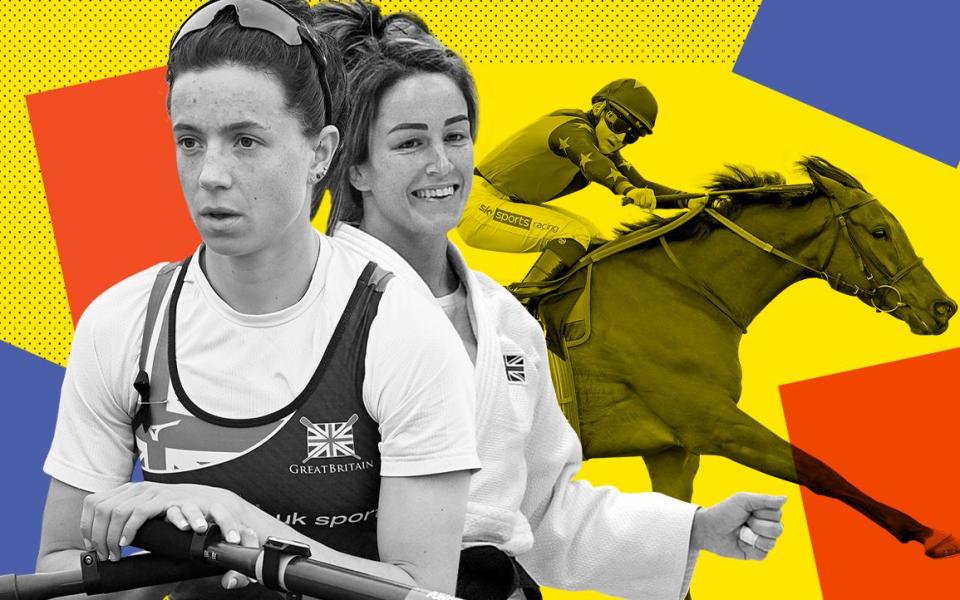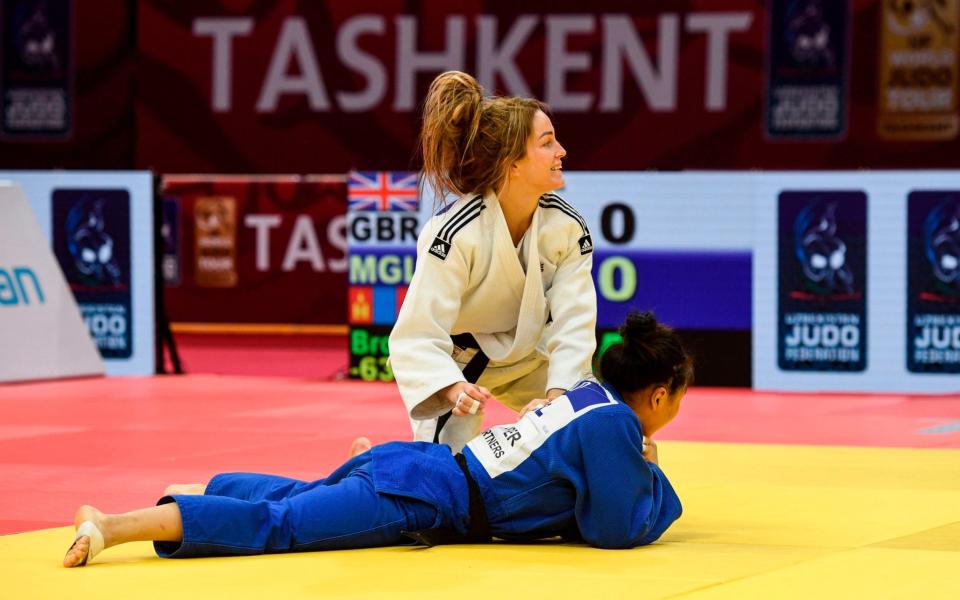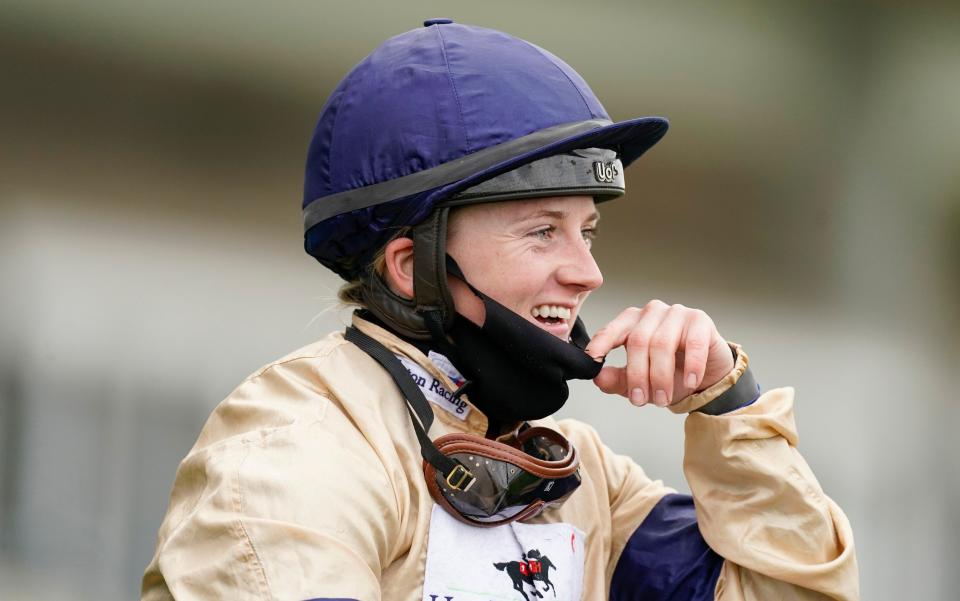The struggles of 'making weight' in sport and why women find it harder than men

British judoka Amy Livesey can still remember it clearly. She should have been preparing for her competition in Canada but instead she was frantically trying to locate her contraceptive pill, fearing her participation later that week was in jeopardy.
“It was really stressful, I changed hotel rooms and I couldn’t locate it,” she tells Telegraph Sport. “I can’t have a period towards judo time because I know I’ll put on weight that week. It could be as much as a kilo. Normally I just wouldn’t take the risk.”
Like other combat sports, judo requires individuals to make a certain weight to compete. Weightlifters, jockeys and light-weight rowers also have to hit the right numbers on the scales.
While everyone’s cycle is different, premenstrual symptoms brought on by hormone fluctuations can often include weight gain and increased fluid retention. Livesey, her period arriving on competition day, was still able to make weight.
But her experience – and the anxiety she felt – provides a telling insight into the often overlooked challenges women face making weight. Of even greater concern is that this lack of understanding is leaving sportswomen in danger of long-term harm.
Weight-cutting commonly has two types: one is to lose weight in the form of fat and muscle in the weeks before an event; the other is to lose weight by dehydration before weigh-in and then rapidly regain it before competition time. Common methods include restricting food intake, water-loading and perspiration through exercise, wearing a sweatsuit or sitting in a sauna.
Athletes have their favoured techniques, based on personal experience. But due to physiological differences – around menstruation, for example, or the fact men have a higher capacity to dehydrate through sweating – is it actually best suited to them? “With boys, they can go for a run and lose a couple of kilos,” notes former European Under-23 champion Livesey. “If I went for a run in a sweatsuit, I would barely lose a kilo.”

Manipulating body weight, often to extreme lengths, comes with risks, as shown last month when UFC fighter Julija Stoliarenko’s bout with Julia Avila was called off after the Lithuanian twice collapsed at the weigh-in.
“The problem was not my weight cut,” she said afterwards. “I made weight too early. As everybody knows, when you cut weight you cannot be on this weight for too long because you’re already at the limit of your dehydration.”
Stoliarenko pushed her body to its limits and it is a situation judoka Livesey, targeting this summer’s Olympics in the -63kg category, can also relate to, having seen a team-mate break down three years ago with an eating disorder. As a result, she addressed her own crash diet methods.
“It’s not a way to live a life,” she says. “If I didn’t get the help of a nutritionist at the time I did, I don’t think I would be where I am now.”
With athletes facing pressure to make weight in order to compete, it is not surprising to hear stories of individuals tipping the wrong side of healthy – which makes good practice even more crucial.
“I always tell myself that we will weigh in,” British lightweight rower Imogen Grant tells Telegraph Sport. Encouragingly, her approach and that of team-mate Emily Craig, with whom she won silver in the women’s lightweight double scull at the recent European Championships, is clearly drawn from experience, not blind faith.
“It’s about balance,” adds Craig. “It’s working out what works for you. For me, I’ll cut out sugar and that tends to bring my body weight down. Around a racing weekend you go into more actual food weight. Gut-emptying [getting rid of food waste that can include use of laxatives] and cutting fibre.”
In women’s lightweight rowing, the crew average must be 57kg, with no rower over 59kg, although the team policy is to aim for 57kg each. There are “about 10 to 12 days over the season” where they are actually at race weight. A support network – nutritionists to talk through how to fuel properly and psychologists to help with concerns around food – is clearly invaluable if you are part of an elite team.
Unlike most jockeys who will often have to sweat or starve for a ride, Hollie Doyle, at 5ft, actually faced the opposite issue, becoming too lean amid her heavy workload while trying to break into the professional ranks and thus risking a detrimental impact on her riding.

Help came from the Oaksey House team, run by the Injured Jockeys Fund, and Gavin Egan, her personal trainer. Slowly she was able to become a more consistent eight-stone weight and in 2020 she topped her own record for the most winners in a calendar year by a female jockey.
“I wouldn’t have had a clue where to start without that help,” she says. “When I’m really busy, that’s when I found it was hard for me to keep my weight on, regardless of how much muscle to body fat I retained. It’s taken me probably a good two-and-a-half years to get to where I am now.”
And yet the concern is for those who do not benefit from such specialist help, particularly young females whose bodies are still developing. Aside from performance drop-offs, there can also be more severe implications, something Grant can sympathise with having noticed the “warning sign” of irregular periods briefly coming through the team in her late teens.
“I didn’t really know enough when my periods stopped to seek help and figure it out,” she says. “It can be really difficult the first time people start being a lightweight. They’re the youngest they’ve ever been and they have the least amount of knowledge to do it in a safe way.”
Grant and Craig both emphasise the importance of regular periods, even if it can prompt slight fluctuations in weight, but they are able to recognise such changes.
“There is a definite lack of understanding between the gradual changing of your body shape to get down to weight versus the short-term effects of gut- emptying and food weight,” adds Craig. “People don’t necessarily appreciate that the gut-emptying side of things is maybe 800g in the last 72 hours, and that’s something we’ve practised for years.”
When it comes to manipulating weight, it is a fine balance between risk and reward. But ultimately that is no reason to suffer in silence.
“Weight and weight management can be a really tricky issue,” concludes Grant. “Over the course of my career I’ve seen people get it really wrong. And that sucks. Because that’s not what it should be like. In order to protect everybody, you need knowledge, openness and communication.”
The Flat Jockeys’ Championship begins on Saturday May 1, 2021. To find out more about Hollie Doyle visit Greatbritishracing.com.

